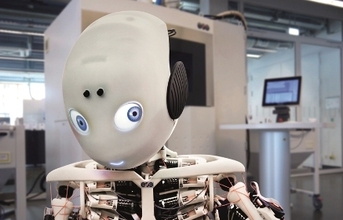
Humanoid robotics: A vision with social impact
In the future, with the increasing advances in Artificial Intelligence and robotics, robots will play a much more prominent role both in society and at work - to the point that especially dangerous and repetitive tasks can be completed by robots. In this context, building robots with similar morphology to the human body yields critical advantages over classical robotic approaches.
First and foremost, the human musculoskeletal system is a proven solution that leads to dexterous, dynamic and robust robots. In addition, a human-like robot eases interaction between human and machine significantly, making it more intuitive and natural. Over centuries humans have adapted the environment to fit their needs, humanoid robots can therefore fit into this environment more easily - thus avoiding expensive adaptions.
Furthermore, building robots that are compatible with the human anatomy can help to augment and repair human mobility, with the use of exoskeletons and prosthetics, for example.
Dr. Adrian Keppler, Chief Marketing Officer (CMO) at EOS, says: "While a larger number of companies focusses on AI development, only a very small number of projects worldwide develop humanoid robotics. Therefore, we are all the more proud to support the renowned Roboy project and see its meaning.
"As the strengths of Additive Manufacturing lie in those areas where conventional manufacturing reaches its limitations, EOS' technology is the ideal solution for a research project as ambitious as Roboy. We are happy that the Roboy team is trusting in EOS to realize their vision."
END



































